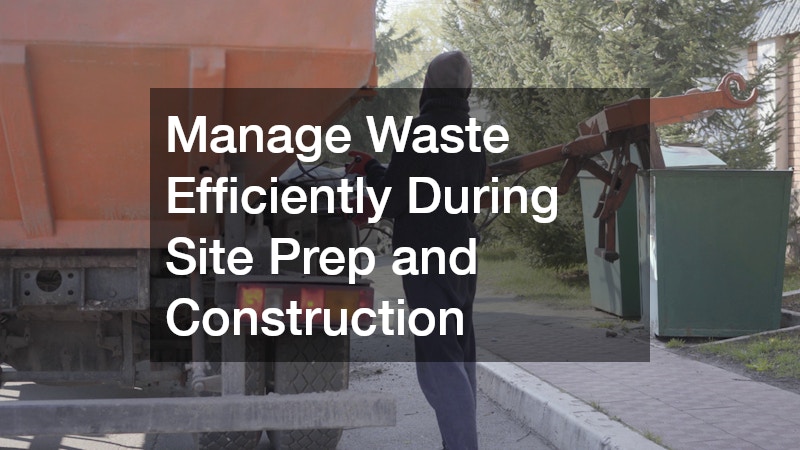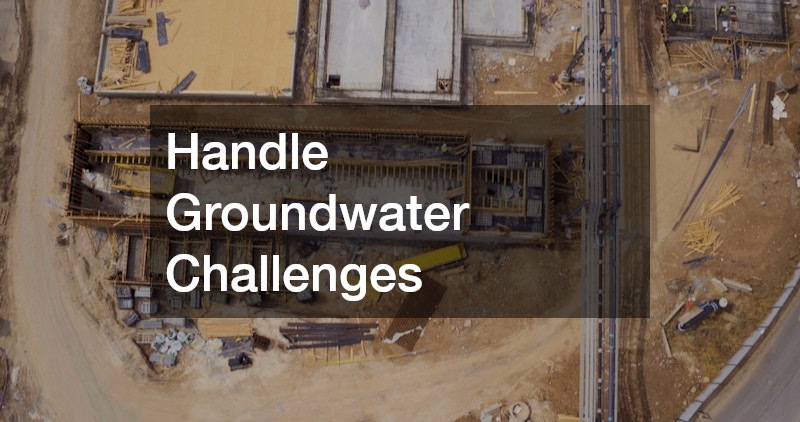When embarking on a land development project, having a solid plan in place is crucial for success. From understanding your budget to securing the right property, there are many factors to consider. This comprehensive guide will walk you through each step of the land development process, providing valuable insights and tips to help you navigate the journey.
If you’re developing land for commercial, industrial, or mixed-use purposes, the early stages set the foundation for everything that follows. Decisions made during site selection, financing, and permitting can significantly impact timelines and costs later on. It’s not just about finding a piece of land and building on it—successful development requires careful research, coordination with professionals, and an understanding of the regulatory and environmental conditions tied to the property.
Whether you’re a first-time developer or a small business owner expanding into new territory, this article will serve as a practical resource to help you design and execute a land development plan for your venture.
Understand Your Budget and Funding Options
Before diving into a land development plan, it’s essential to have a clear understanding of your budget and funding options. Consider factors such as financing for land acquisition, construction costs, permits, and other expenses. By creating a detailed budget and exploring various funding options, you can ensure that your project stays on track financially.
When it comes to financing land development, several options are available. You may choose to seek a traditional bank loan, apply for a government grant or loan, or partner with investors. Each option has its own set of pros and cons, so it’s important to carefully evaluate which option aligns best with your financial goals and needs.
By having a solid grasp of your budget and exploring different funding options, you can set a strong foundation for your land development project. This will not only help you make informed decisions throughout the process but also ensure that your project is financially sustainable in the long run.

Where to Begin Your Search for the Right Property
Once you have a clear understanding of your budget and funding options, the next step in your land development plan is to establish how to find land for development that’s appropriate for your project. Start by creating a list of criteria that align with your project goals and requirements. Consider factors such as location, size, zoning regulations, and accessibility.
There are various ways to find land for development, including working with real estate agents, searching online listings, attending auctions, and networking with other developers. Be sure to conduct thorough research and due diligence on potential properties to ensure they meet your needs and are a sound investment.
By starting your search for the right property early on in the land development process, you can streamline the project timeline and set yourself up for success. Take the time to explore different options and find a property that not only meets your current needs but also has potential for future growth and development.
Lease or Own? Weigh Your Options for Business Locations
When it comes to choosing a location for your business, a key decision of your land development plan is whether to lease or own the property. Each option has its own set of benefits and considerations, so it’s important to weigh your options carefully. Consider factors such as long-term affordability, flexibility, and investment potential.
If you choose a commercial real estate lease, be sure to review the terms of the lease agreement carefully and consider factors such as lease duration, rent increases, and maintenance responsibilities. On the other hand, if you decide to purchase a property, evaluate factors such as financing options, property value appreciation, and ownership costs.
Weighing the pros and cons of leasing versus owning a business location will allow you to make an informed decision that aligns with your business goals and budget. Whether you choose to lease or own, it’s important to consider factors such as location, accessibility, and operational needs to ensure the success of your business.
Prepare the Site: What to Know About Clearing Existing Structures
Before you can begin construction on your land development project, it’s essential to prepare the site by clearing existing structures. This process involves removing any buildings, debris, or obstacles that may impede the development process. By clearing the site effectively, you can create a clean slate for construction to begin.
Commercial demolition services are often used to clear existing structures on a development site. These services specialize in safely and efficiently demolishing buildings and structures, ensuring that the site is ready for the next phase of construction. Be sure to work with reputable demolition contractors who have experience in land development plans.
By preparing the site and clearing existing structures before construction begins, you can streamline the development process and avoid potential delays or complications. Take the time to assess the site thoroughly and develop a clear plan for clearing the existing structures, ensuring that the project stays on track and meets its timeline and budget.

Manage Waste Efficiently During Site Prep and Construction
Managing waste effectively is a crucial aspect of land development, both during the site preparation phase and throughout the construction process. Proper waste management not only helps to protect the environment but also ensures the safety and efficiency of the project. By implementing efficient waste management practices, you can minimize the impact on the surrounding area and comply with regulations.
One key aspect of waste management during land development is local dumpster rental. Renting a dumpster allows you to conveniently dispose of construction debris, materials, and other waste on-site, reducing the need for multiple trips to a landfill. Be sure to work with a reliable dumpster rental provider who offers various sizes and timely pickup and drop-off services.
By incorporating efficient waste management practices into your land development plan, you can reduce the environmental impact of your project and maintain a clean and organized worksite. Be proactive in managing waste throughout the site preparation and construction phases to ensure that the project proceeds smoothly and meets regulatory requirements.
Dig Deep into Site Preparation
Site preparation is a critical phase of the land development process that sets the stage for construction to begin. This phase involves tasks such as clearing the site, grading the land, and preparing the foundation for buildings and infrastructure. This will ensure that the site is ready for construction to proceed smoothly.
Excavation services play a key role in site preparation, as they are responsible for digging trenches, grading the land, and preparing the foundation for buildings. These tasks form a critical part of executing your land development plan, ensuring that the site is properly prepared for construction.
It’s essential to work with experienced excavation contractors with the necessary equipment and expertise to handle the demands of the project. Be sure to communicate effectively with your contractors to ensure that the site preparation meets your specifications and timeline.
By focusing on site preparation and working closely with excavation contractors, you can lay a solid foundation for your land development project. Take the time to plan and coordinate the site preparation activities, ensuring that the site is properly graded, drained, and ready for construction to begin.
Plan for Jobsite Hygiene and Worker Needs
Ensuring proper hygiene and meeting the needs of workers on the jobsite is an essential aspect of any land development project. By planning for jobsite hygiene and worker needs, you can create a safe and comfortable work environment that promotes productivity and efficiency. Consider factors such as restroom facilities, handwashing stations, and break areas to support the health and well-being of your workers.
One key aspect of planning for jobsite hygiene is partnering with a portable toilet rental company. These companies provide portable restroom facilities that can be easily set up on-site, ensuring that workers have access to clean and sanitary facilities throughout the project. Be sure to communicate with your rental provider to determine the number and placement of portable toilets needed for the jobsite.
By proactively planning for jobsite hygiene and meeting the needs of workers, you can create a positive working environment that supports the success of your land development plan. Take the time to assess the hygiene and comfort requirements of your workers and implement solutions that promote a safe and healthy workplace. By prioritizing jobsite hygiene, you can enhance worker satisfaction, productivity, and project outcomes.

Handle Groundwater Challenges
Managing groundwater challenges is a common issue that may arise during land development projects, particularly in areas with high water tables. Groundwater can pose various risks to construction projects, such as flooding, instability, and contamination. By handling groundwater challenges effectively, you can mitigate these risks and ensure the success of your project.
Commercial construction dewatering is a common solution for managing groundwater challenges during land development projects. This process involves removing excess water from the construction site using pumps, wells, and other dewatering techniques. By implementing dewatering measures, you can maintain a dry and stable working environment and prevent potential water-related issues.
By proactively addressing groundwater challenges and implementing effective dewatering measures, you can minimize the impact of groundwater on your land development project. Consult with dewatering experts and engineers to develop a comprehensive plan for managing groundwater challenges, ensuring that your land development plan proceeds smoothly and stays on track. By handling groundwater challenges proactively, you can protect the integrity of the site and achieve successful project outcomes.
Secure the Perimeter: Site Safety and Access Control
Ensuring site safety and controlling access to the project site are critical aspects of any land development plan that cannot be overlooked. By securing the perimeter of the site, you can protect workers, equipment, and materials from unauthorized access and potential hazards. Implementing site safety and access control measures is essential for maintaining a safe and productive work environment.
Fence installation is a common method used to secure the perimeter of a land development site. Fences provide a physical barrier that restricts access to the site, deters trespassing, and enhances security. Be sure to install fences around the entire perimeter of the site and implement access control measures such as gates, locks, and signage to regulate entry and exit.
By prioritizing site safety and access control measures, you can create a secure and protected work environment that promotes productivity and minimizes risks. Take the time to assess the specific safety and security needs of your project site and implement solutions that align with regulations and best practices. By securing the perimeter effectively, you can ensure the safety of workers and the success of your land development project.

Consider a Property’s Multi-Use Potential
When evaluating potential properties for land development, it’s important to consider their multi-use potential. Properties with multi-use potential can offer additional benefits such as flexibility, scalability, and diversification of revenue streams. By considering a property’s real estate potential, you can maximize its value and investment returns.
Assess the zoning regulations and restrictions of potential properties to determine their suitability for various uses and developments. Properties that are zoned for mixed-use or multiple purposes may offer opportunities for commercial, residential, or recreational development. Consider future trends and market demands to identify properties with multi-use potential that align with your project goals.
By exploring a property’s multi-use potential and considering its versatility for various developments, you can unlock new possibilities for your land development plan. Take the time to conduct thorough research and due diligence on potential properties to identify those with multi-use potential that align with your vision and investment objectives. By leveraging a property’s multi-use potential, you can maximize its value and create a diverse and dynamic development project.
Embarking on a land development project requires careful planning, preparation, and execution. By understanding your budget, securing the right property, and implementing effective site preparation and management strategies, you can confidently craft and execute a successful land development plan.
From managing waste and groundwater challenges to ensuring site safety, each step of the land development process plays a crucial role in the project’s success. By following this comprehensive guide and incorporating the tips and insights provided, you can navigate the land development journey with confidence and achieve your project goals.



